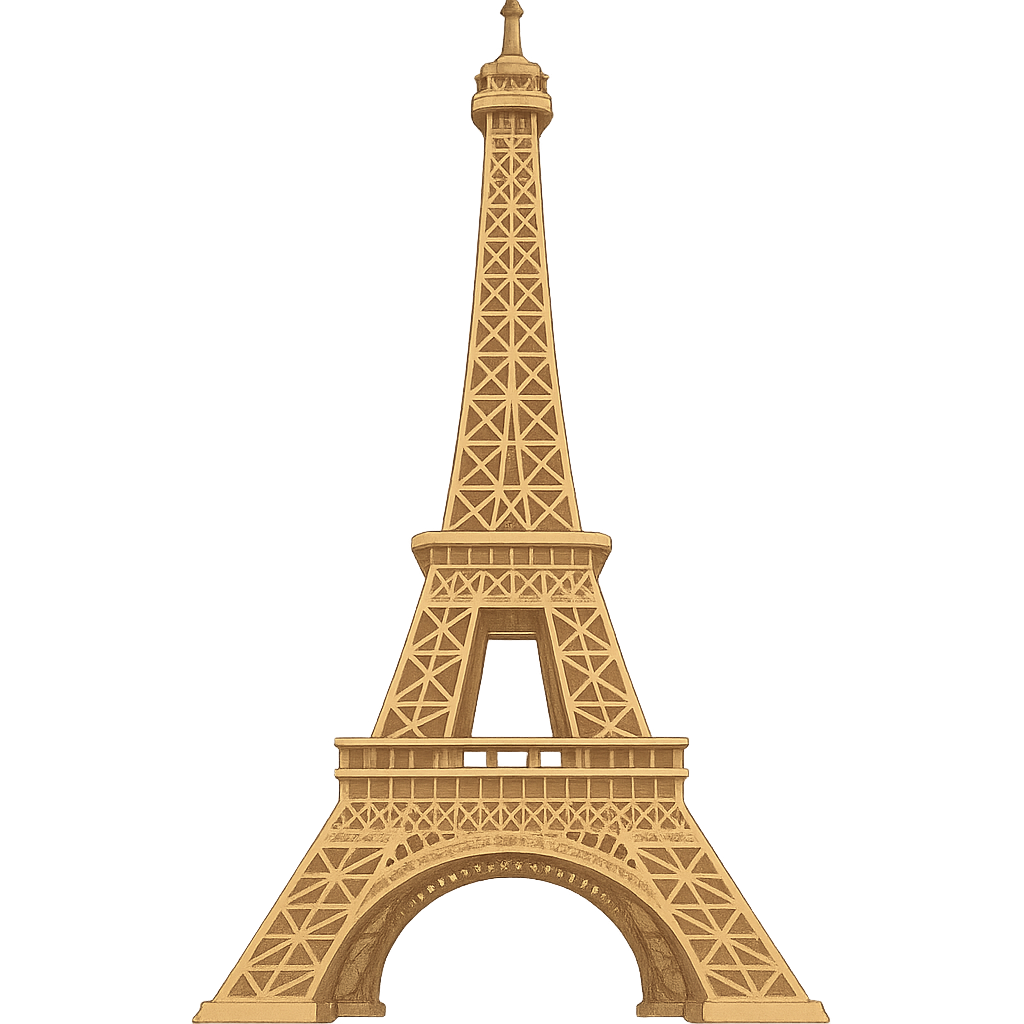The Iron Lady of Paris
From my highest point, I feel the wind tickle my iron spire as the whole city of Paris spreads out below me like a sparkling map. I watch little boats glide along the Seine River and see tiny cars zip through the charming streets. At night, I come alive, glittering with thousands of golden lights that make me a beacon in the City of Light. I am made of strong iron, but my frame is woven together in a pattern that looks as delicate as lace. People from every corner of the world come to climb my stairs or ride my elevators, soaring toward the sky. From my viewing decks, they whisper their dreams into the breeze and take pictures of my famous shape. You might have seen me in movies or on postcards, but do you know my story? I am the Eiffel Tower.
I wasn't always here, watching over this beautiful city. I was born from an idea for a giant, wonderful party: the 1889 World’s Fair. This fair was meant to celebrate 100 years since the French Revolution and to show off the world's most amazing new inventions. France wanted a grand entrance to the fair, something no one had ever seen before. A brilliant engineer named Gustave Eiffel and his team came up with a daring plan to build the tallest structure in the entire world. In 1887, hundreds of workers began putting me together. It was like building with a giant erector set! Each one of my 18,000 iron pieces was carefully designed to fit perfectly with the others, all held together by two and a half million special pins called rivets. For two years, two months, and five days, the people of Paris watched as I grew taller and taller, reaching for the clouds. Finally, on March 31, 1889, I was finished, a towering symbol of modern engineering and imagination.
Believe it or not, not everyone loved me when I first appeared. Some Parisians were quite upset. They called me a strange and ugly 'iron monster' and wrote angry letters saying I ruined the view of their beautiful city. They didn't understand that I was something new, a different kind of beauty made from metal and math. In fact, I was only supposed to stand for 20 years before being taken down and sold for scrap metal. But then, something wonderful happened. As people came to the World’s Fair, they climbed my stairs and rode my elevators. They saw Paris from a breathtaking new perspective and began to fall in love with my intricate design and the amazing views I offered. My 20th birthday came and went, and I was still standing. I had proven that I was much more than a temporary attraction; I had won a place in people's hearts.
I found a new and important purpose that saved me from being dismantled. My incredible height made me perfect for sending signals through the air. In the early 1900s, I helped send the first radio signals across the Atlantic Ocean, connecting continents in a whole new way. Later, I became a tower for television broadcasts. I had transformed from a party entrance into a hardworking scientific tool. Today, I am more than just an iron tower. I am a symbol of Paris, a place for celebration, and a reminder that new ideas, even ones that seem strange at first, can become the world's most beloved treasures. So when you look at me, whether in a picture or standing right below me, remember to dream big. Just like my builders, you can create something wonderful that reaches for the sky and inspires the world.
Reading Comprehension Questions
Click to see answer
